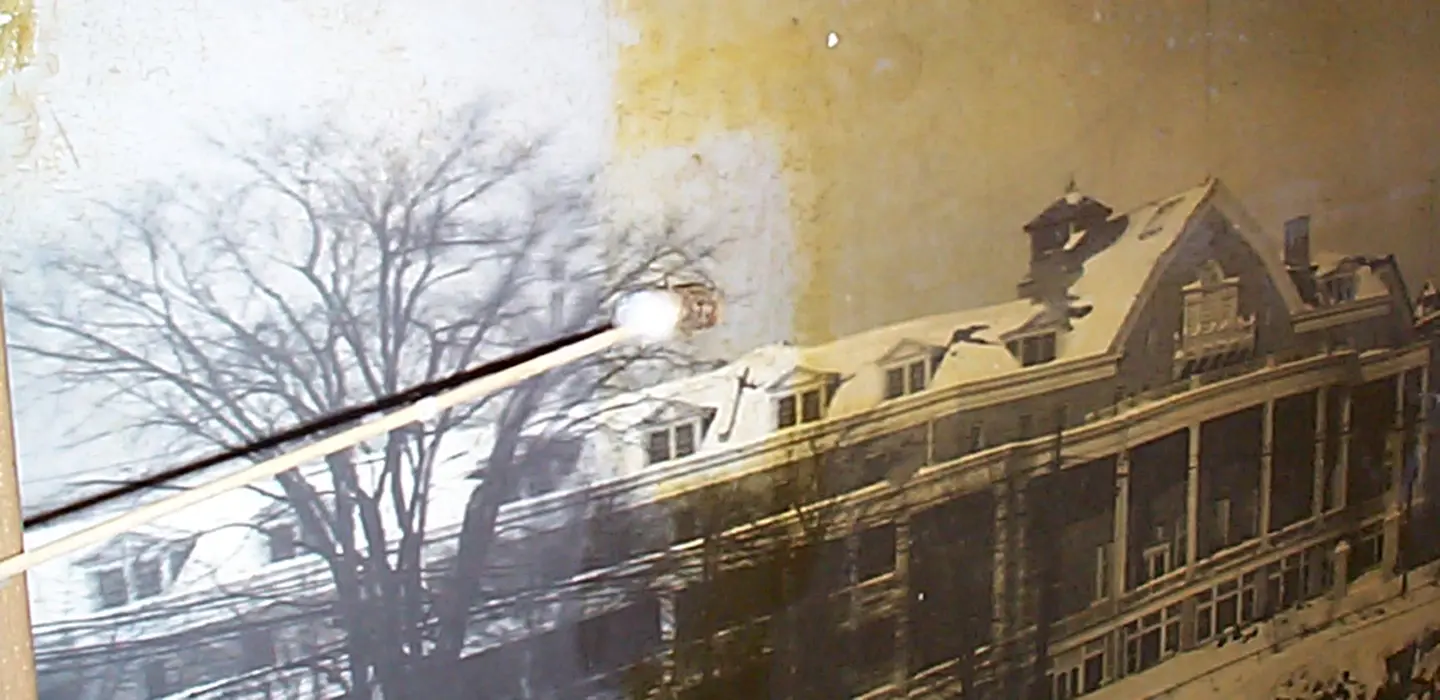
The cleaning
The varnish and trapped dirt on the surface of both panoramas made them look unusually dull compared to the unvarnished areas under their frames. Although cleaning the images was time-consuming, it was key to illuminating their brilliance.
With more tones and sharpness to the prints in the unvarnished areas, conservators decided to try to remove the varnish if it could be done quickly with a low-toxicity solvent, since the storage room-turned-lab had no ventilation. After tests revealed that the varnish could be safely removed with acetone without damaging the image layer, the conservators started this painstaking process.
The team wore respirator masks with appropriate filters, latex gloves and lab coats to protect themselves from the vapours of the acetone. Niagara Falls in the early twentieth century came alive as the swabs, cotton balls and brushes slowly worked their way across the nearly six-metre-long prints.
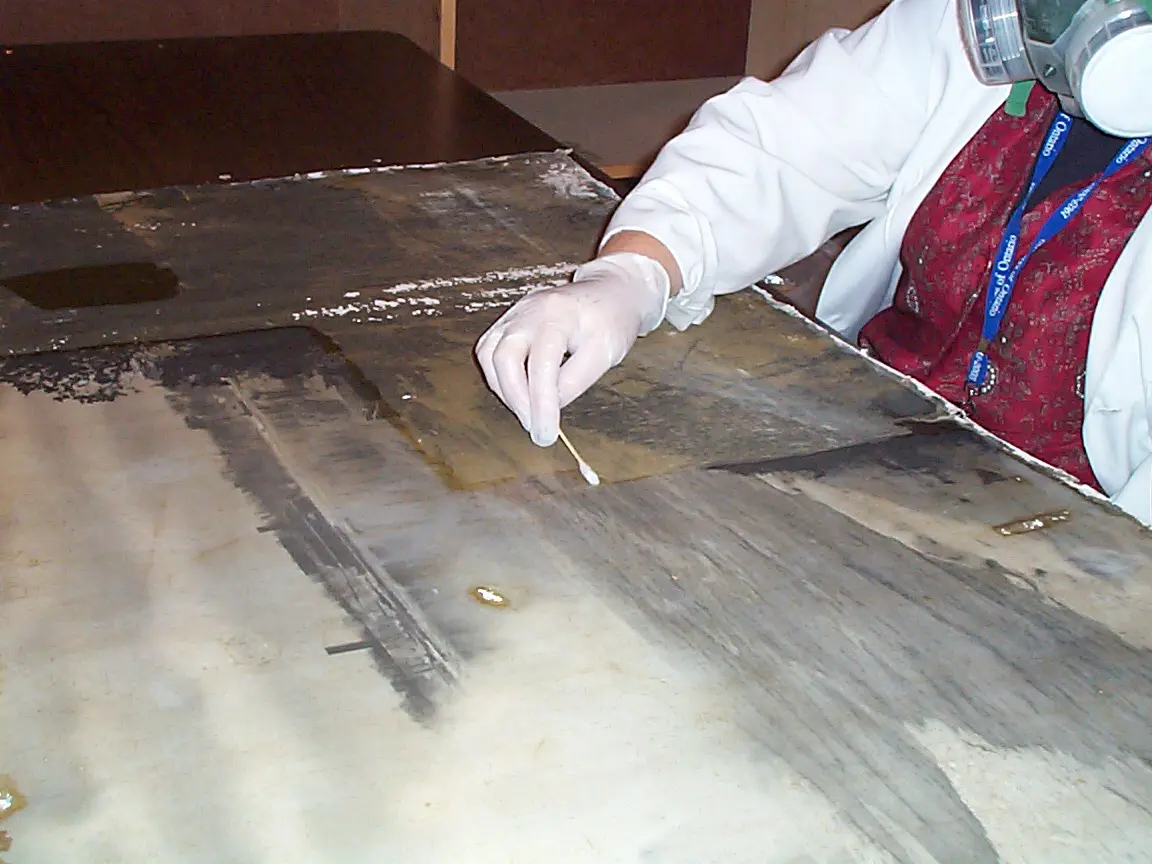
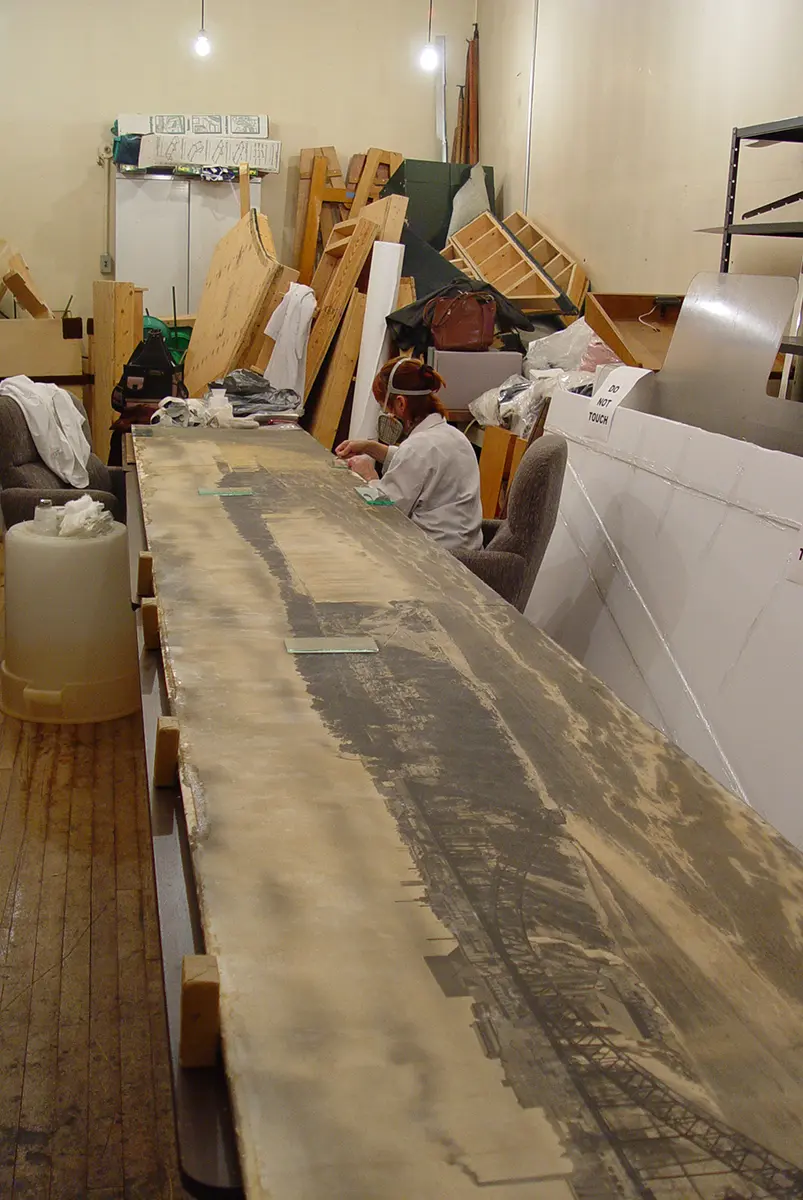
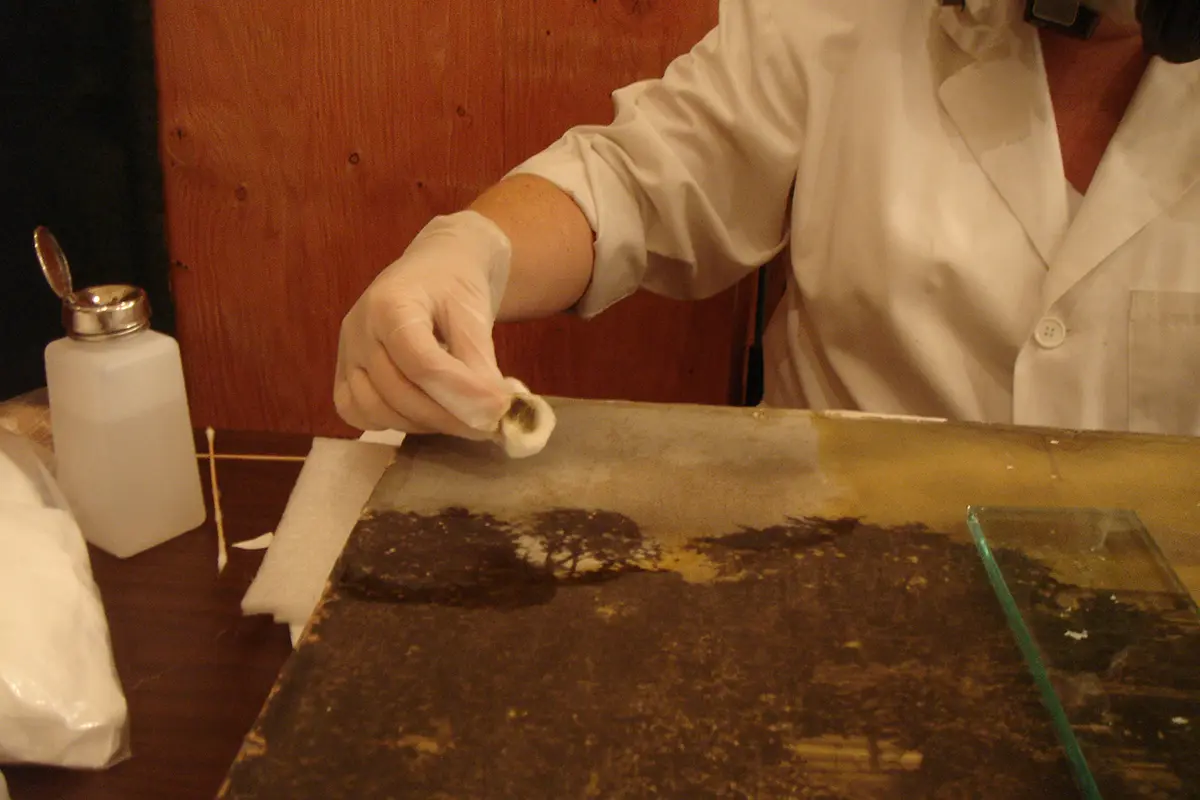
The results of the cleaning were dramatic. The prints looked much sharper and richer than when they were first found. Except for some damaged areas and some areas of loss where the risk of further damage was too great, the conservators were successful in removing almost all the varnish, contributing to the overall splendour of the scenes.
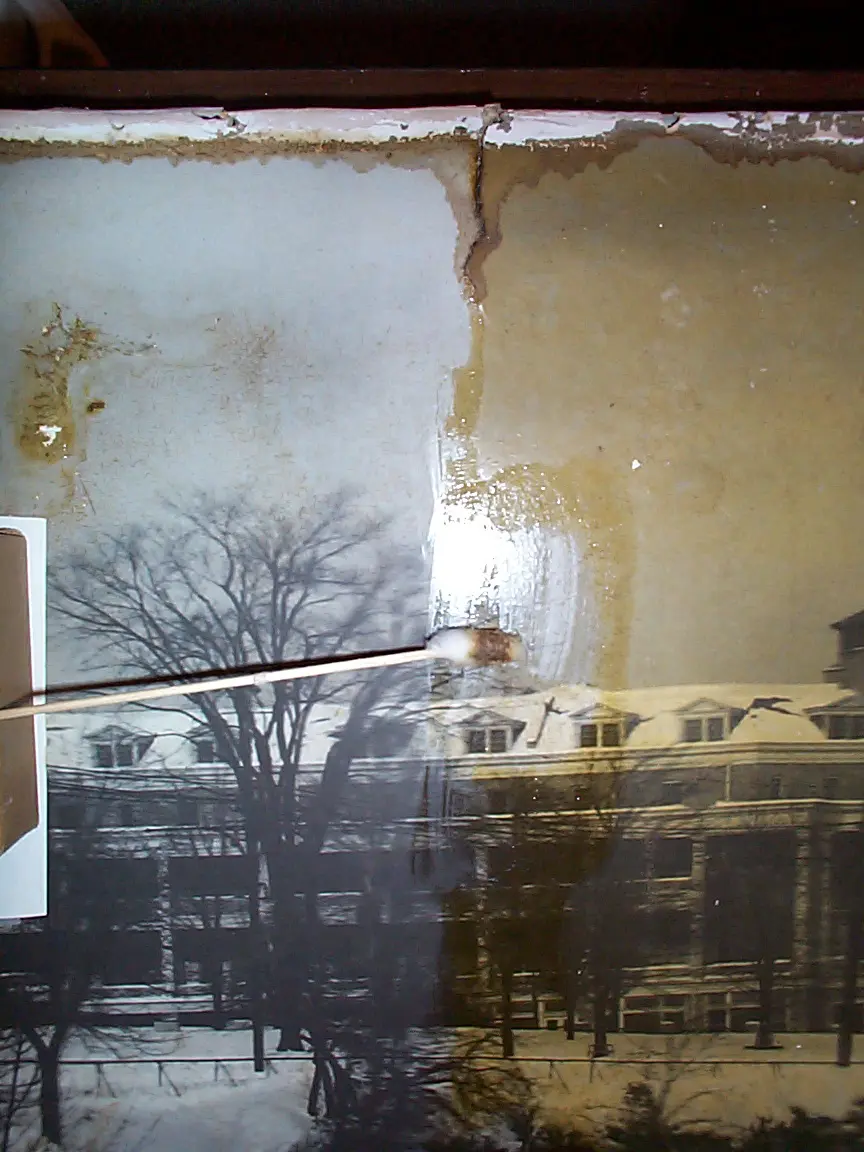
Back to: Chapter 02
The assessment
Next up: Chapter 04
The repairs
Looking for more records?
Search our collection